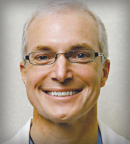Can patients with breast cancer who achieve an “exceptional response” to neoadjuvant therapy safely forgo surgery? That is a question being seriously explored in multinational trials.
“We’ve known for a long time that we can eliminate disease in many patients if they have chemosensitive tumors. We’ve been doing this with advanced local disease and now with much smaller tumors. Patients will love you if you can safely avoid surgery for them,” said Pat W. Whitworth, MD, a surgical oncologist who is Director of the Nashville Breast Center in Tennessee.
In 2014, Boughey and colleagues estimated that, after neoadjuvant therapy, about half of patients with triple-negative or HER2-positive tumors may not need surgery, based on a 50% pathologic complete response rate in those subtypes.1 “I don’t know if the term ‘exceptional responders’ really applies anymore, because this is becoming more and more something that we expect,” Dr. Whitworth said.

“I don’t know if the term ‘exceptional responders’ really applies anymore, because this is becoming more and more something that we expect."— Pat W. Whitworth, MD
Tweet this quote
At the 2020 Miami Breast Cancer Conference, Dr. Whitworth discussed the latest thinking on this topic, standing in for another leader in this field, Henry Kuerer, MD, PhD, of The University of Texas MD Anderson Cancer Center, Houston, who was absent due to institutional COVID-19–related travel restrictions.2
Pathologic Complete Response and Locoregional Failure
The impact of pathologic complete response on locoregional failure is less clear. Patients with either triple-negative or HER2-positive disease subtypes have a “low risk [for treatment failure], lower than we expect to see in average-risk patients after conventional breast-conserving surgery,” he said.
In a series from MD Anderson that evaluated 751 patients, the 5-year locoregional recurrence rate among patients achieving pathologic complete responses was 2.6% for the HER2-positive cohort (vs 13.3% without this level of response) and 1.4% (vs 10.1%) among the triple-negative cohort.3

Henry Kuerer, MD, PhD
The question has since become a matter of how to identify patients who could avoid surgery after neoadjuvant systemic treatment and be enrolled into a clinical trial testing this approach, he said. From a surgical point of view, what is needed is an adequate tissue sample that is representative of what would have been the surgical sample. To achieve this, Dr. Whitworth uses an image-guided, vacuum-assisted, core biopsy technique.
“The other thing that’s very important here is close multidisciplinary collaboration—not only among surgeons, medical oncologists, and breast imagers, but also pathologists, radiation oncologists, and coordinators,” he added.
An encouraging feasibility study from MD Anderson aimed to identify exceptional responders in whom surgery could be eliminated. It involved 40 patients with T1–2, N0–3 triple-negative or HER2-positive tumors who underwent systemic neoadjuvant treatment, vacuum-assisted core biopsy, and then surgery—after which 19 patients achieved a pathologic complete response (ie, no residual invasive and no in situ disease).4 The false-negative rate proved to be 10%; the two false-negative cases were in patients who had no more than six cores taken, which is a far lower number than is currently recommended. The median number of cores in the study was 12.
Did radiologic response equate with pathologic response? Only to some degree. Pathologic complete responses were achieved by 48% of patients. A radiologic partial response was observed in 80%, and within this group, 37% had a complete pathologic complete response. The radiologic complete response rate was 20%; within this group, 88% had a pathologic complete response.
There was some correlation between radiologic response and pathologic response, “but it was incomplete,” he said. Pathologic complete response was highest in the 20% of patients who also had a complete radiologic response. A radiologic partial response was the most common outcome, and about one-third of these patients also had a complete pathologic response. “That’s the largest group…. So you really don’t want to eliminate these patients,” he said.
What about microcalcifications and ductal carcinoma in situ (DCIS)? The avoidance of surgery requires the elimination of both invasive cancer and DCIS. In triple-negative cancer, neoadjuvant systemic treatment can eliminate DCIS in 45% of patients, but those with both microcalcifications and DCIS on the initial biopsy had a pathologic complete response of only 27% in one study.5
HER2-positive patients are even more likely to have microcalcifications along with DCIS, according to a 2019 study that found them to be concurrent in 60%,6 he said. But since “microcalcifications do not necessarily indicate cancer,” he said, their presence may not be a contraindication to de-escalation.
A Pause in Progress
“The [de-escalation] ship was sailing along,” according to Dr. Whitworth, until several studies presented at the 2019 San Antonio Breast Cancer Symposium “caused a pause in the overall progress. Two of these de-escalation trials were NRG-BR005, which involved 98 patients with breast cancer of any subtype,7 and the MICRA trial from the Netherlands Cancer Institute, which involved 167 patients.8 The false-negative rates were high in these studies, and there were concerns about trial design, imaging methods, and other procedures, such as insufficient number of cores, the use of smaller-gauge needles, the inclusion of multicentric or multifocal disease, allowance of T3 tumors, lack of retrieval of the biopsy clip, and more. “We don’t have the complete data on these factors yet,” he noted.
A third study, the German RESPONDER trial, offered “a little sunshine” but was accompanied by some concerning findings as well, he continued. The study’s false-negative rate was 18%, although it dropped to 0% among patients whose biopsy was performed with a 7-gauge needle.9
The false-negative rate can be minimized with several approaches, according to findings from a pooled multi-institutional, multinational study led by Dr. Kuerer at MD Anderson.10 Overall, the false-negative rate was in the range of 10% to 20%, but in a planned subgroup analysis of 76 “ideal” patients (which excluded patients with lobular cancer and patients with residual abnormalities > 2 cm on imaging) who underwent at least six vacuum-assisted core biopsies (12–24 in many cases), the false-negative rate dropped to 3.2% overall. It was 10% in hormone receptor–positive/HER2-positive patients but 0% in all other subtypes. “This is much lower than the incidence of residual disease in patients who had lumpectomy with clear margins,” Dr. Whitworth commented.
Phase II Feasibility Trial
To establish more certainty about eliminating surgery in exceptional responders, a large collaborative trial is underway: the MD Anderson Multicenter Trial 2016-0046, which also involves the Mayo Clinic, Levine Cancer Institute, and the University of Pittsburgh. The study is enrolling patients with breast cancer with T1/T2 HER2-positive or triple-negative tumors who will undergo image-guided, vacuum-assisted biopsy using a 9-gauge needle to obtain ≥ 12 cores. Patients with no residual disease (invasive or in situ) on biopsy will receive radiation therapy alone. Patients with residual disease will receive standard surgery and radiotherapy. Follow-up is every 6 months, and the primary endpoint is locoregional recurrence.
"We’re getting better and better systemic therapies, and we have an obligation to study the potential of no surgery for these patients."— Pat W. Whitworth, MD
Tweet this quote
Other investigators have suggested an alternative de-escalation strategy: include lumpectomy and sentinel node biopsy but eliminate radiotherapy for patients who have a pathologic complete response.
“The conclusion here is that the field is obviously changing,” Dr. Whitworth commented. “We’re getting better and better systemic therapies, and we have an obligation to study the potential of no surgery for these patients. If we can get targeted imaging and biopsy right, and if we can accurately identify these patients, we can ensure the safety and efficacy of trials that study this question.”
DISCLOSURE: Dr. Whitworth has been a consultant for GHI, Prelude, and Bard Health; owns stock or is a shareholder in Targeted Medical Education, Advantage Consulting and Education, Advantage Clinical Research, and the Nashville Breast Center; and has received research support from Targeted Medical Education.
REFERENCES
1. Boughey JC, McCall LM, Ballman KV, et al: Tumor biology correlates with rates of breast-conserving surgery and pathologic complete response after neoadjuvant chemotherapy for breast cancer: Findings from the ACOSOG Z1071 (Alliance) prospective multicenter clinical trial. Ann Surg 260:608-614, 2014.
2. Whitworth P: The future of breast surgery in exceptional responders. 2020 Miami Breast Cancer Conference. Invited lecture. Presented March 6, 2020.
3. Swisher SK, Vila J, Tucker SL, et al: Locoregional control according to breast cancer subtype and response to neoadjuvant chemotherapy in breast cancer patients undergoing breast-conserving therapy. Ann Surg Oncol 23:749-756, 2016.
4. Kuerer HM, Rauch GM, Krishnamurthy S, et al: A clinical feasibility trial for identification of exceptional responders in whom breast cancer surgery can be eliminated following neoadjuvant systemic therapy. Ann Surg 267:946-951, 2018.
5. van la Parra RFD, Tadros AB, Checka CM, et al: Baseline factors predicting a response to neoadjuvant chemotherapy with implications for non-surgical management of triple-negative breast cancer. Br J Surg 105:535-543, 2018.
6. Sun S, van la Parra RFD, Rauch GM, et al: Patient selection for clinical trials eliminating surgery for HER2-positive breast cancer treated with neoadjuvant systemic therapy. Ann Surg Oncol 26:3071-3079, 2019.
7. Basik M, Cecchini RS, De Los Santos JF, et al: Primary analysis of NRG-BR005, a phase II trial assessing accuracy of tumor bed biopsies in predicting pathologic complete response in patients with clinical/radiological complete response after neoadjuvant chemotherapy to explore the feasibility of breast-conserving treatment without surgery. 2019 San Antonio Breast Cancer Symposium. Abstract GS5-05. Presented December 13, 2019.
8. Vrancken Peeters M-JTFD, van Loevezijn A, van der Noordaa MEM, et al: Towards omitting breast surgery in patients with a pathologic response after neoadjuvant systemic treatment: Interim analysis of the MICRA trial. 2019 San Antonio Breast Cancer Symposium. Abstract GS5-06. Presented December 13, 2019.
9. Heil J, Pfob A, Sinn H-PS, et al: Diagnosing residual disease and pathologic complete response after neoadjuvant chemotherapy in breast cancer patients by image-guided vacuum-assisted breast biopsy: Results of a prospective multicenter trial. 2019 San Antonio Breast Cancer Symposium. Abstract GS5-03. Presented December 13, 2019.
10. Tasoulis MK, Lee H-B, Yang W, et al: Accuracy of post-neoadjuvant chemotherapy image-guided breast biopsy to predict the presence of residual cancer: A multi-institutional pooled analysis. 2019 San Antonio Breast Cancer Symposium. Abstract GS5-04. Presented December 13, 2019.

